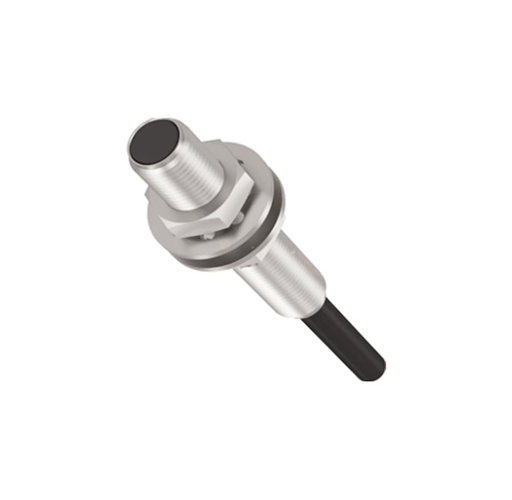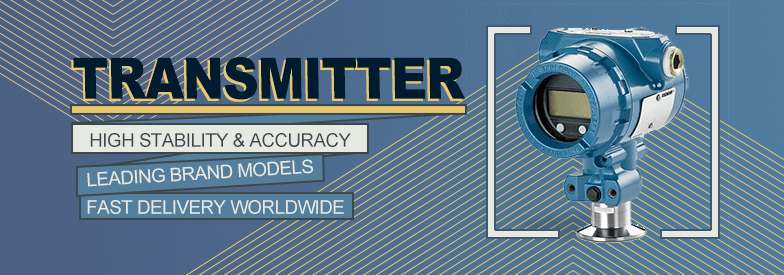Sensors and transmitters play an important role in the field of automatic control. Transmitters are developed based on sensors, which have close relationship and differences.
1. Definition Differences of Sensor and Transmitter
1.1 Definition of Sensor
Sensor is a kind of detection device, which can sense the measured information. It can transform the detected information into electrical signal or other required form of output according to certain rules to achieve the purpose of transmitting, processing, storing, displaying, recording and controlling information.
The sensor is composed of sensitive element and conversion element.
The elements that can perceive the measured variables (temperature, pressure, liquid level and flow) are called sensitive elements. The ability to convert the perceived variables into non-standard electrical signals or other forms of output signals is called conversion element.

Figure 1: Autonics Sensor ADS-AE
1.2 Definition of Transmitter
When the signal converter is integrated with the sensor, it is called the transmitter.
The transmitter is a sensor whose output is a standard signal.
The transmitter transforms the non-standard electrical signal or other forms of signal transmitted by the sensor into standard electrical signal, such as 4-20mA, 1-5V, and then send the standard signal to the secondary instrument.

Figure 2: Rosemount Transmitter 3951CD2A22A1JM5Q4HR5
2. Function Differences of Sensor and Transmitter
2.1 Function of Sensor
The main way to obtain information in the field of nature and production is through sensors. The technology of sensor plays a significant role in developing economy and promoting social progress.
In modern industrial production filed, especially in the process of automatic production, sensors are used to monitor and control the various parameters in the production process, keep the equipment work in the normal state or the optimal state, and make the products achieve the best quality and so on.

Figure 3: Balluff Sensor BOS008F
2.2 Function of Transmitter
The function of the transmitter is to detect the process parameters and transmit the measured values in a specific signal form for display and adjustment.
In other words, in the automatic detection and regulation system, the transmitter will transform various process parameters into unified standard signals, such as temperature, pressure, flow, liquid level, composition and other physical quantities. Then the transmitter transmits the standard signal to the regulator and indicator recorder for regulation, indication and recording.

Figure 4: Function of transmitter in basic control circuit
3. Component Differences of Sensor and Transmitter
|
Components |
Use of the Component |
|
|
Sensor |
Sensitive element |
The sensing element directly senses the measured information and outputs the physical quantity signal which has definite relationship with the measured information. |
|
Conversion element |
The conversion element converts the physical quantity signal output by the sensitive element into an electrical signal. |
|
|
Converter circuit |
The conversion circuit amplifies and modulates the electrical signal output by the conversion element. |
|
|
Auxiliary power supply |
The auxiliary power supply supplies the conversion element and the conversion circuit. |
|
|
Transmitter |
Measurement part |
The measurement part detects the measured variable X and converts it into the input signal Zi which can be accepted by the amplifier. |
|
Amplifier |
The ε signal is the difference between the algebraic sum of Zi and zero signal Zo and Zf, which is amplified by the amplifier and converted into the standard output signal y. |
|
|
Feedback part |
The feedback part converts the output signal y of the transmitter into the feedback signal Zf, which is sent back to the input. |
4. Collected Signal Differences of Sensor and Transmitter
|
Type of Acquisition Signal |
Characteristics of Acquisition Signal |
|
|
Sensor |
⃰ Non standard electrical signal ⃰ Other forms of signals
|
Weak and nonstandard signal. |
|
Transmitter |
⃰ Standard signal |
* The output signal is strong. * The standard current signal can be used for long distance transmission, and the standard voltage signal can be used for short distance transmission. |
5. Output Differences of Sensor and Transmitter
|
Output |
|
|
Sensor |
Nonstandard weak electrical signal. |
|
Transmitter |
Standard power signal, such as 0-5V voltage, 4-20mA current, etc. |
There must be sensors in the transmitter, which is equivalent to the combination of sensors and power conversion devices.
6. Wiring System and Power Supply Differences
|
Wiring system |
Power Supply |
|
|
Sensor |
Two line system, three line system and four line system |
Some sensors need additional power supply, some do not need power supply. |
|
Transmitter |
Two line system |
Transmitter power supply and signal transmission are the same group of lines. |
Find Right Transmitter on OKmarts



